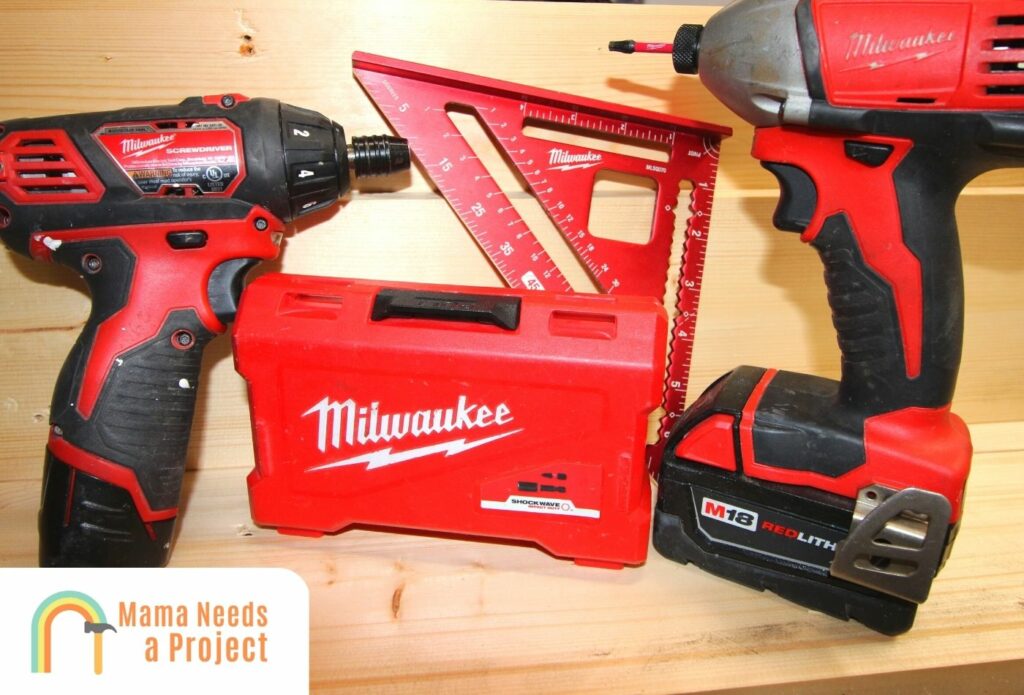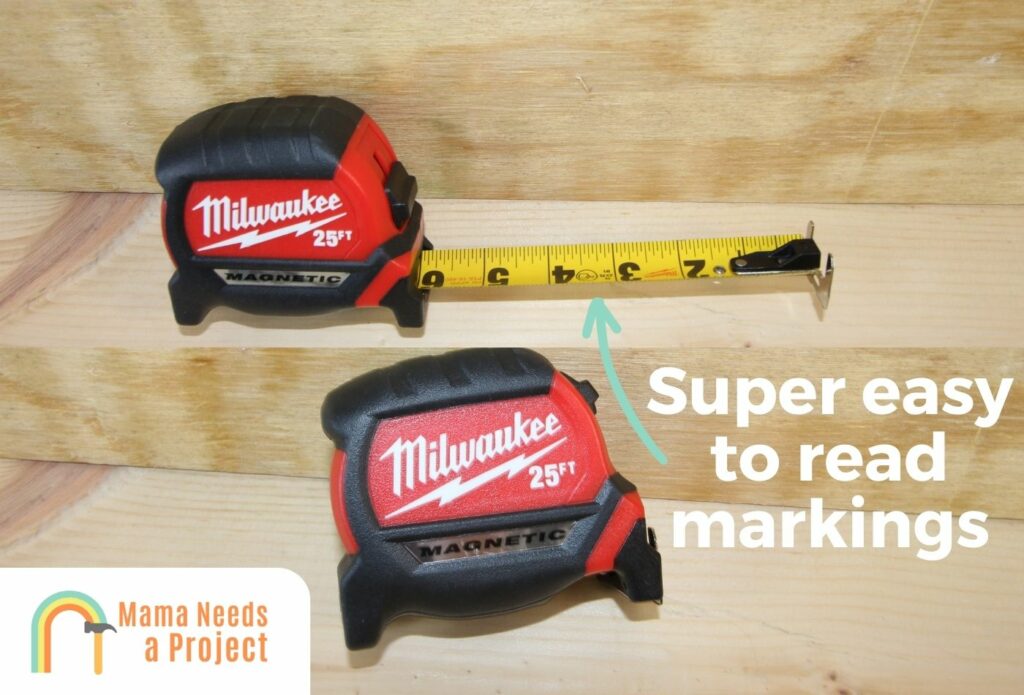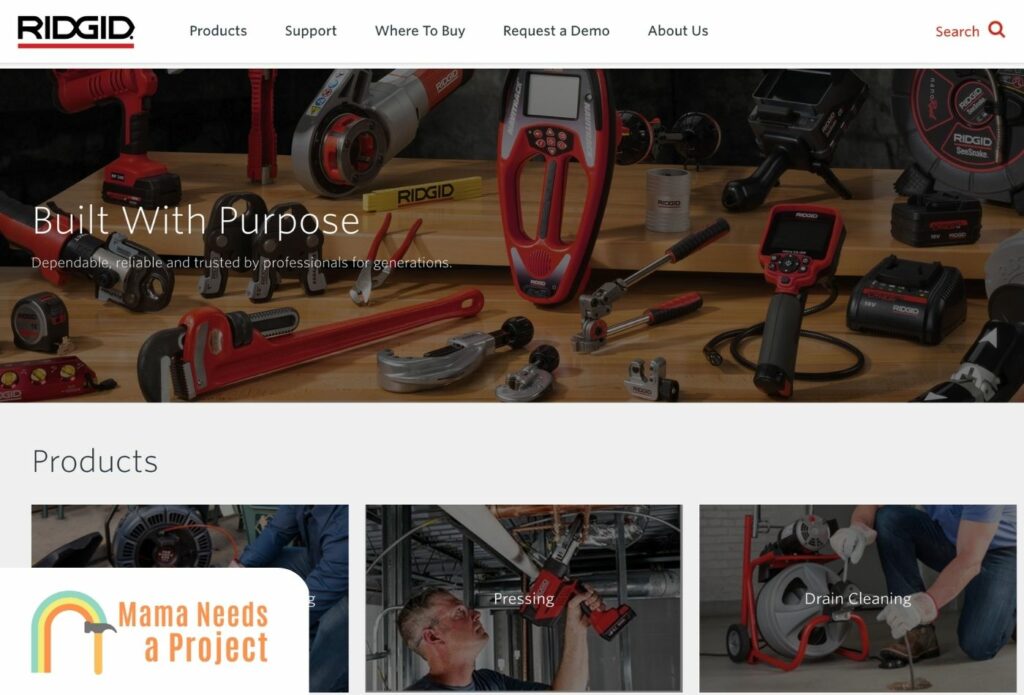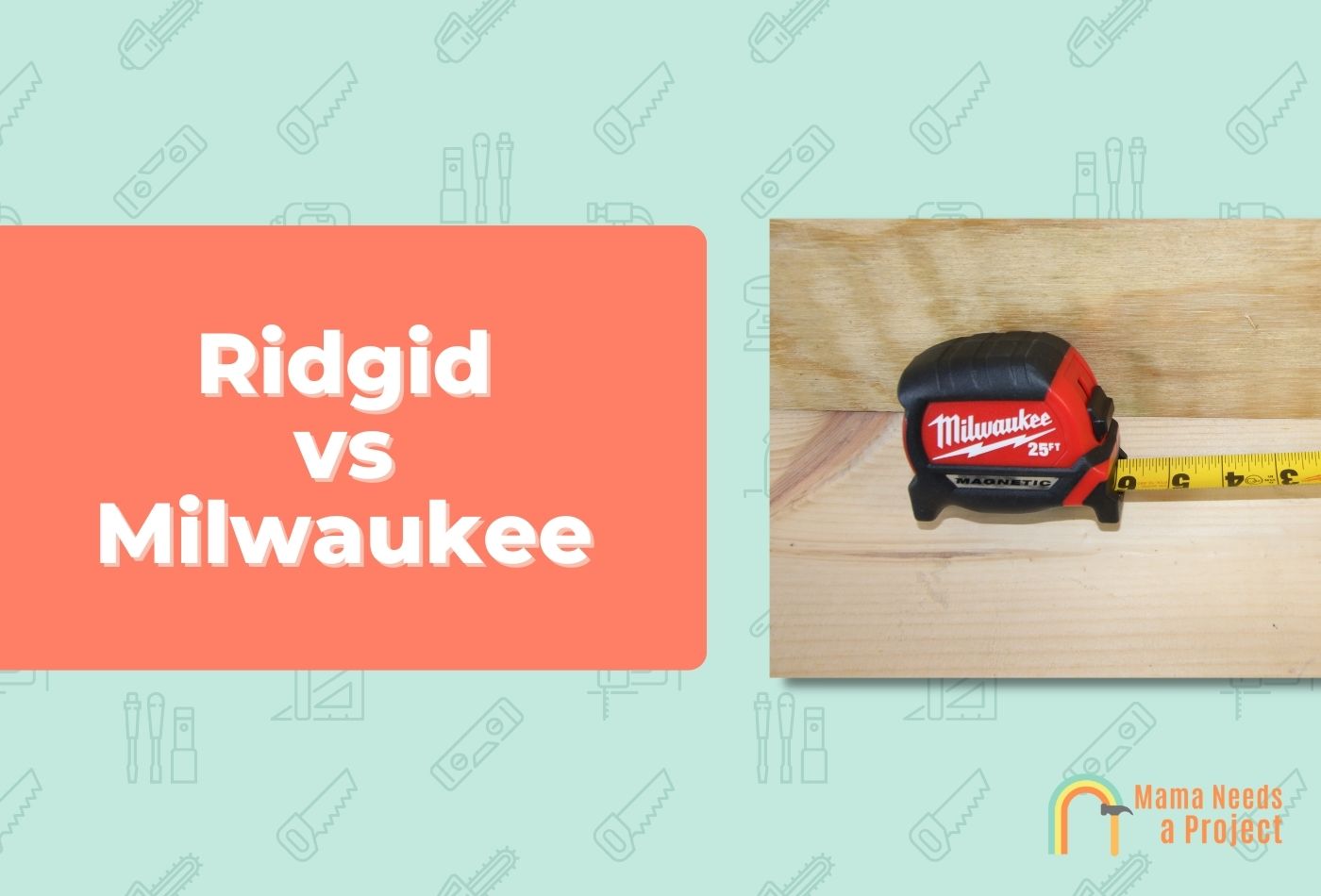Ridgid vs Milwaukee: Which is Better? (Ultimate Guide)
With an affordable price point and some flashy-looking power tools, Ridgid has the attention of many DIYers. But with its history of creating durable, powerful power tools long-accepted by the professional trades, Milwaukee has a stable full of red and black loyalists.
Both companies make great tools, but which is better?
With both Ridgid and Milwaukee putting a lot of effort into the power tool market, it makes sense that you’d put these brands head-to-head.
In this Ridgid vs Milwaukee guide, I’ll highlight the best things about both companies, including the different tools available, their warranties, and the pros and cons of each. Let’s dig in!
- Ultimately, Milwaukee offers more powerful, durable, and quality tools than Ridigid – but it comes at a cost. Milwaukee tools are more expensive than Ridgid so if this is important, go with Ridgid tools.
- Ridigid makes quality products for DIYers and weekend warriors at a more affordable price.
Ridgid vs Milwaukee Power Tools

Both Ridgid and Milwaukee make some tough, durable power tools. Both have fairly expansive lineups, and that can make choosing one brand over another a serious challenge. Before I weigh in on the brand we prefer between these two, let’s take a look at some of the differences between the brands.
Quality & Reliability
Ridgid and Milwaukee both make high-quality power tools. They use excellent materials and components, and they should both last a long time. But, which is better?
Ridgid’s power tools are great, but the brand has certain strengths in areas that others can’t compete with. For instance, Ridgid wet/dry vacs are consistently an outstanding blend of power, capability, and reliability. Also, the power tools made specifically for plumbing are the brand’s true bread and butter. However, the brand also offers quality drills, impact drivers, saws, and other tools with plenty of power, both corded and cordless.
Milwaukee’s power tool lineup is steeped in quality and reliability. Without a doubt, they’re some of the most reliable power tools on the market. Most tools are overbuilt with pro-grade materials, and they have the power to tackle any project.
In terms of quality and reliability, I’d give Milwaukee tools a slight edge here because of their superior build quality.
Curious how their impact drivers stack up? Check out the video below!
Product Lineup
Both companies offer a large variety of power tools to choose from, both corded and cordless. However, the real pride of the Ridgid and Milwaukee lines are the brand’s respective 18V power tools.
For a long time, Ridgid focused primarily on plumbing power tools, such as threaders, pressing machines for plumbing fittings, and the like. However, the brand now offers a wide range of drills, impact drivers, circular saws, miter saws, table saws, leaf blowers, flashlights, reciprocating saws, grinders, and more.
Milwaukee’s power tool line-up is equally as expansive, though in different ways. While the brand offers almost all of the same cordless power tools, it focuses more on heavy-duty construction and automotive uses. This includes drills, impact drivers, impact wrenches, grinders, reciprocating saws, and circular saws. Also, its larger tools, like miter saws and table saws, are primarily cordless, and it offers outdoor power tools, as well.
As far as product lineups go, I wouldn’t consider one brand superior to the other. Both will have just about any tool you could need.
Features

Ridgid power tools usually have some pretty handy features. For one, most of the current models feature powerful brushless motors and lithium-ion batteries. This allows these tools to provide lots of power while also having plenty of run time. The brand’s main line is the 18V Max Output cordless lineup, which simplified and improved the older generation’s lack of performance.
Milwaukee’s power tool line-up, on the other hand, offers owners a ton of features. For example, Milwaukee’s batteries are incredibly powerful, and they’re available in a range of sizes. Some of these batteries reach sizes of 12.0Ah, which is significantly larger than the largest batteries most other power tool brands offer. Also, Milwaukee motors are primarily brushless and extremely powerful.
Milwaukee also offers One Key, which is essentially a tool tracking system. While it’s probably not necessary for DIYers, pros can track their tools’ whereabouts, conditions, and who has them through Bluetooth tech. With Milwaukee being a more premium brand, tracking the use of these expensive tools is a big help in protecting your investment.
So which is better in terms of features? Again, I’d give Milwaukee a slight edge here – but not by a ton.
Price
There’s a fairly steep difference in pricing between Ridgid and Milwaukee tools.
While it can be difficult to compare apples to apples on some tools (like miter saws and table saws), this guide should act as a helpful comparison.
Brushless Drill Driver/Impact Driver Combo with two batteries and bag:
7 ¼-inch Cordless Circular Saw, tool only:
12-inch Sliding Miter Saw, Double Bevel, 15-amp:
13-inch Thickness Planer, 15-amp:
- Milwaukee: Not Available
- Ridgid: $499.00
Job Site Table Saw:
12-Gallon Shop Vac:
18V ½-inch Cordless Impact Wrench:
In most cases, Milwaukee’s power tools are at least slightly, if not significantly, more expensive than Ridgid’s. But, Milwaukee focuses primarily on cordless tools with large, powerful batteries, which will typically cost more to produce.
When comparing Ridgid vs Milwaukee in terms of cost – there’s no denying Ridigid wins this comparison.
Warranty
Ridgid offers some incredible warranties. It covers its hand power tools for up to 3 years with a limited warranty. Under this warranty, customers can present a receipt and have their battery or tool repaired or replaced, which is a great deal among power tool manufacturers.
Ridgid also offers a Lifetime Service Agreement on many of its products, and this warranty is the real deal.
Shortly after purchase, you can register for the LSA, and under this plan, the tool and batteries are protected for the lifetime of the original purchaser’s ownership. This is good on stationary, pneumatic, battery-powered, and power equipment tools.
Milwaukee’s warranty isn’t too shabby, either.
All tools are covered under warranty from the date of purchase regardless of registration. The warranty will provide free repairs or replacements for defective materials or workmanship.
For power tools, this warranty lasts one, two, three, or five years, depending on the tool. Batteries are also covered for up to three years, and Milwaukee will repair or replace them if it’s determined that they failed from manufacturing defects or defects in materials.
Both the Milwaukee brand and Ridgid brand offer great warranty coverage to back their products. They are comparable to other high quality tool manufacturers like Makita or DeWalt.
It’s hard to go wrong with either brand when comparing warranty coverage.
History of Ridgid Tools

Ridgid Tools has been in business for over a century.
Founded in 1923 in Elyria, Ohio, the company first started manufacturing plumbing tools, specifically the Ridgid Heavy-Duty Straight Pipe Wrench. This wrench’s design is still for sale and popular today. Under its parent company, Ridge Tool Company, the company’s first few decades of manufacturing focused on plumbing tools. These include hand tools like wrenches, as well as pipe threading machines and other devices related to the plumbing industry.
Emerson Electric purchased Ridge Tool Co in the 1960s and the brand continued producing quality plumbing tools with the latest technology.
In the 1990s, Ridgid brought a plumbing fitting pressing tool to market, the CT-400 Pressing Tool. This tool could permanently connect pipes to one another using special fittings and a tremendous amount of power, without soldering or brazing the joint.
Ridgid continued focusing on plumbing tools and expanding its power tool offerings. Popular tools included drain cameras, plumbing snakes, and more. With a well-established market, the brand finally began producing power tools like drills, impact drivers, saws, and other tools. Since the brand usually positions itself as an affordable option and backs its tools with a Lifetime Service Agreement, Ridgid is now a popular choice in the power tool world.
Ridgid Pros
There are lots of great things about the Ridgid tool brand.
For one, the brand’s Lifetime Service Agreement is one of the best warranties in the industry. As long as you buy an eligible tool and register it with the required methods, your tool will be covered against faulty materials or craftsmanship for as long as you own it. Ridgid will repair or replace the item for free. This was actually put to the test frequently in the past few years, as the brand replaced its old Octane batteries with the new Max Output batteries when folks needed replacements. Very few other companies can match that type of coverage.
Also, Ridgid has a wide range of cordless tools to choose from, and they almost all work with the 18V Max Output battery system. And, they’re typically more affordably priced than the competition. This means that a DIYer could build a large stable of power tools that all run on the same batteries for less than they could with other brands, or by purchasing multiple different brands.
Ridgid manufactures excellent tools at an affordable price. While they might not be the most powerful, they will certainly get the job done for any DIYer or weekend warrior.
Ridgid Cons
Ridgid’s lack of innovation is probably its most significant con.
The brand just doesn’t have the battery technology of some of its competition, particularly DeWalt, which features flexible voltages that self-regulate based on the tool they’re installed in. Also, there isn’t a tracking system to use to track these tools, which might not be such a drawback for a homeowner but it could be a significant issue for pros.
The other thing that Ridgid lacks is true product diversity. Ridgid’s focus is on power tools and plumbing tools, but other brands are producing lots of other tools and taking advantage of cordless outdoor power equipment. Folks want to invest in just one battery system, and since Ridgid doesn’t offer lawn mowers, string trimmers, and other outdoor equipment, they’re more likely to use other brands that do.
History of Milwaukee Tools
Milwaukee’s company history stretches back almost 100 years, forming in 1924, and its history is pretty incredible.
Milwaukee was formed by a tool and die maker called A.H. Petersen in Milwaukee, Wisconsin. Henry Ford was looking for a smaller, lighter power drill with a ¼-inch capacity that it could use to replace the larger, more cumbersome models on the assembly line. As a result, Petersen designed and produced the Hole Shooter, which was the first lightweight drill that a user could operate with one hand. This tool increased productivity and changed the industry.
Unfortunately, a fire destroyed A.H. Petersen’s manufacturing facility not long after. A.F. Siebert then bought the business from Petersen and started a new company that would produce the Hole Shooter, and called it Milwaukee Electric Tool Company.
Over the next several decades, Milwaukee built its business by creating “quality portable tools,” as one of the company’s slogans would say. It also began producing its own motors, portable grinders and sanders, and an electric hammer drill.
In 1949, the brand began producing right-angle drills that would make plumbing and electrical installations easier, a predecessor to the brand’s coveted Hole Hawg. Two years later, Milwaukee produced the first Sawzall reciprocating saw. These tools were designed for professionals, with powerful motors and pro-grade features that made them popular with folks in the trades. The company’s new slogan, “Nothing but Heavy Duty,” was aptly coined, as the brand’s tools were overbuilt and powerful.
While Milwaukee’s history is rich with innovation, it was also the first company to start producing lithium-ion powered tools—a huge leap forward for the cordless industry. Today, the brand continues to push the envelope on cordless technology, producing both M18 Fuel and MX Fuel battery systems for power tools and light equipment.
Milwaukee Pros
It’s probably not a shock that Milwaukee’s biggest pro is that its tools are consistently overbuilt, powerful, and sturdy.
Milwaukee’s tools, when compared to competitors, are usually more powerful and more durable, meaning that Milwaukee users rarely look to other brands when they need a tool that will work with their battery system.
It’s also worth noting that Milwaukee produces a wide range of power tools. From drills and impact drivers to table saws and miter saws to chainsaws and lawn mowers, there are just so many Milwaukee tools to choose from. Customers can build their entire fleet of power tools around one battery system, which means fewer batteries, fewer chargers, and no confusion. They can run their lawn mower off the same battery that powers their hammer drill, and that’s convenient.
Milwaukee offers innovative tools with more power and durability than many brands. If you’re looking for a premium option that will last for years, I’d highly recommend Milwaukee.
Milwaukee Cons
The real drawback of Milwaukee power tools is that they are expensive.
These tools are built for the long haul and packed with technology, so they’re usually pretty expensive. Milwaukee is really a premium brand when it comes to tools, so users have to expect to pay a little extra.
Also, one thing that DIYers should probably note: Milwaukee tools are usually heavy and powerful. They could be too much tool for some folks, in which case, the extra expense might not be worth it.
Wondering how Milwaukee stacks up against other brands? Check out my guides!
Ridgid vs Milwaukee Verdict
Hands down, Milwaukee makes better tools than Ridgid. They’re more durable, more powerful, and come in a wider variety. That said, they’re also quite a bit more expensive, so you have to mind whether or not the justifiably-high prices are worth it. I think so, but you might not!
Final Thoughts
Choosing a winner between Milwaukee vs Ridgid really comes down to personal preference and power need.
If you need a powerful tool that will last, Milwaukee is the way to go. However, if you want a decent tool with a great warranty at a lower price, Ridgid isn’t a bad choice. I’d just take Milwaukee any day.

Tom Scalisi is a freelance writer, blogger, published author, and website owner with over 20 years of experience in the trades, DIY, and construction. Today, he’s mostly hung up his professional tool belt (though he’ll still tackle a DIY job every now and then) for writing, as he loves teaching DIYers how to accomplish their goals and get the job done.
Tom has written for some of the industry’s most popular websites, including Bob Vila, This Old House, The Family Handyman, and Forbes.
Outside of work and the internet, Tom is a husband and father of four. He loves baseball, whether it’s catching a game live or on TV, or coaching one of the many recreational or travel teams he’s with which he’s involved. He also serves as the Director of Baseball for his local baseball and softball league.

